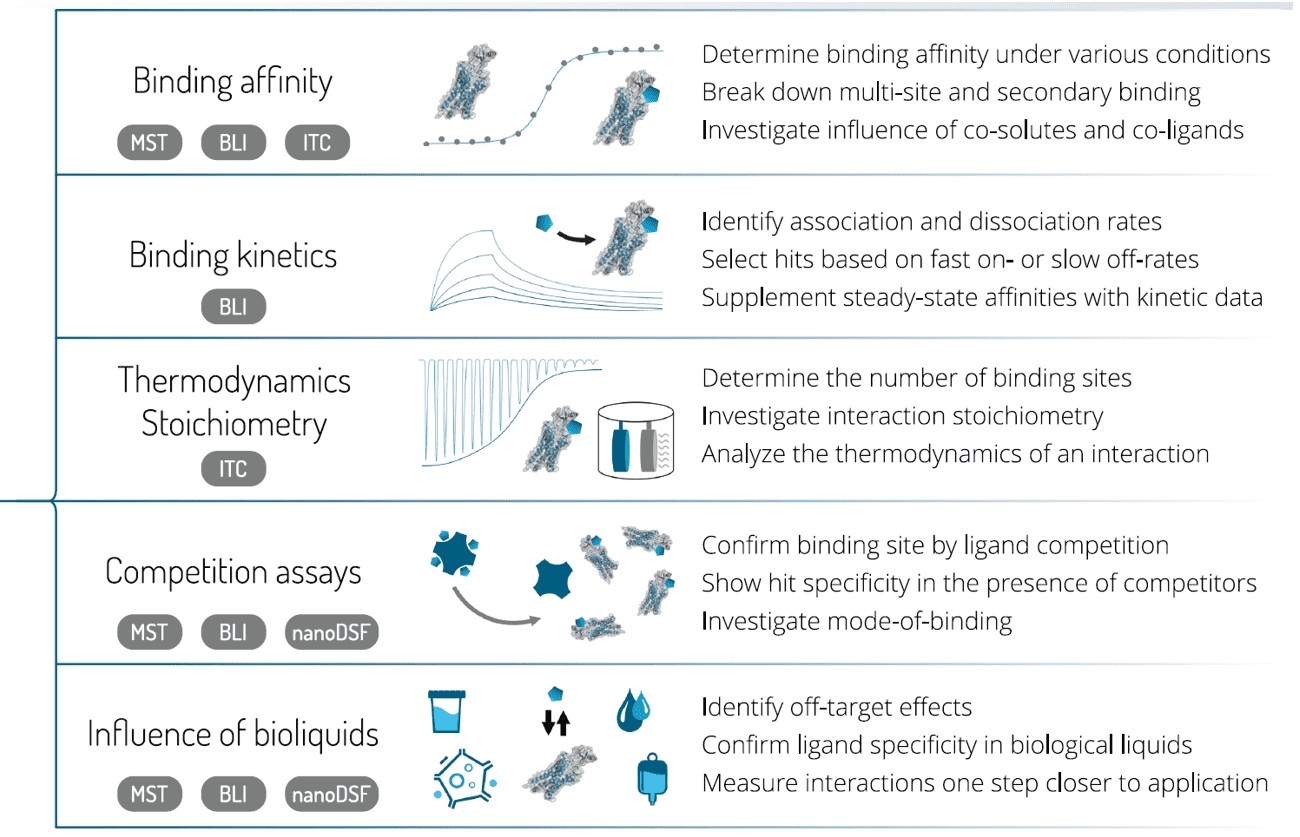Protein-targeted Drug Discovery
from the Experts in Biophysics2bind offers tailor-made services and assays for the early phases of a drug discovery pipeline. In the hit identification phase, we offer true biophysical high-throughput screening with MST and Dianthus. This ensures highest throughput with minimal sample consumption and costs, all the while getting you the most important information at this step: the binding affinity.
For the hit validation phase, 2bind offers various low- and high-throughput biophysical assay formats for confirming and validating initial screening hits. This includes mainly MST, Dianthus, and nanoDSF analytics for affinity, kinetics, and thermal shifts.
Finally, for the hit characterization phase, 2bind offers a variety of specialized assay formats including MST, Dianthus, nanoDSF, BLI, and ITC technologies. These custom assays tell all important parameters of a few selected hits or lead canditates: steady-state affinity, binding kinetics, thermal shift and protein stability effects, as well as interaction thermodynamics.

Hit Identification
2bind is your one-stop shop for early protein-targeted drug discovery and hit identification using MST, Dianthus, and nanoDSF. We cover all steps from assay development to high-throughput screening. We provide in-house compound and bioactive, tool-compound librariers as well as specialized fragment libraries. Our industry-standard compound handling features high-throughput, contact-less Labcyte Echo systems and liquid handling robots.
Click here for a fragment-based drug discovery (FBDD) special!

Comprehensive assay development for proteins, DNA, and RNA with respect to affinity, stability, control selection, robustness, and reproducibility.
150 000 small molecule compound library
5 000 bioactive tool compound library
2 000 fragment library
Contact-less, ultrasound-based direct dilution using Labcyte Echo systems. Minimal ligand consumption (single digit nanoliters per sample).
Liquid-handling robotic platforms for preparation of screening plates and assay samples.
True biophysical hit identification and screening using high-throughput MST, Dianthus, and nanoDSF setups.
Assay Development
All the right tools for the job! We offer the full portfolio of state-of-the art biophysical assay development for MicroScale Thermophoresis, Dianthus, and nanoDSF. Our methods and assays are certified by NanoTemper Technologies (Munich, Germany). The 2bind assay development covers assay setup, establishment of required technical parameters, selection and establishment of positive and negative controls, robustness testing, and transfer to a high-throughput setup.

Ligand Libraries
Biophysical hit screening made easy. 2bind’s partner-network gives you access to computational ligand pre-screening. This allows in silico identification of binders from up to 3 million compound structures. 2bind also offers high-fidelity in-house fragment libraries (n = 20 000) for fragment-based drug discovery as well as specialized small molecule (n = 150 000) and bioactive tool compound (n = 5 000) collections.

Target- or ligand-based pre-screening using novel in silico, fingerprint-based algorithms.
> Reduction of library size and complexity.
> Reduction of screening time and costs.
Flexible sourcing of specialized fragment libraries from partners and vendors.
> Tailored selection of library size.
> Specific selection of chemical space.
150.000 small molecule collection and 5050 bioactive tool compound collection from our partner Assay.Works.
> Seamless integration into our processes.
Liquid Handling
Put MST, Dianthus, and nanoDSF high-throughput screening to a whole new level. By using ultrasound-based, direct dilution systems (LabCyte Echo platform) for fragment and compound handling we can truly unlock the high-throughput potential of MST, Dianthus, and nanoDSF. The LabCyte Echo system enables ultra-fast, contact-less dilution of DMSO stocks with just single-digit nanoliter volumes. No plastic ware consumption, no sample carryover, no cross-contamination, and absolut minimum compound use! Read more on how the Echo system works.
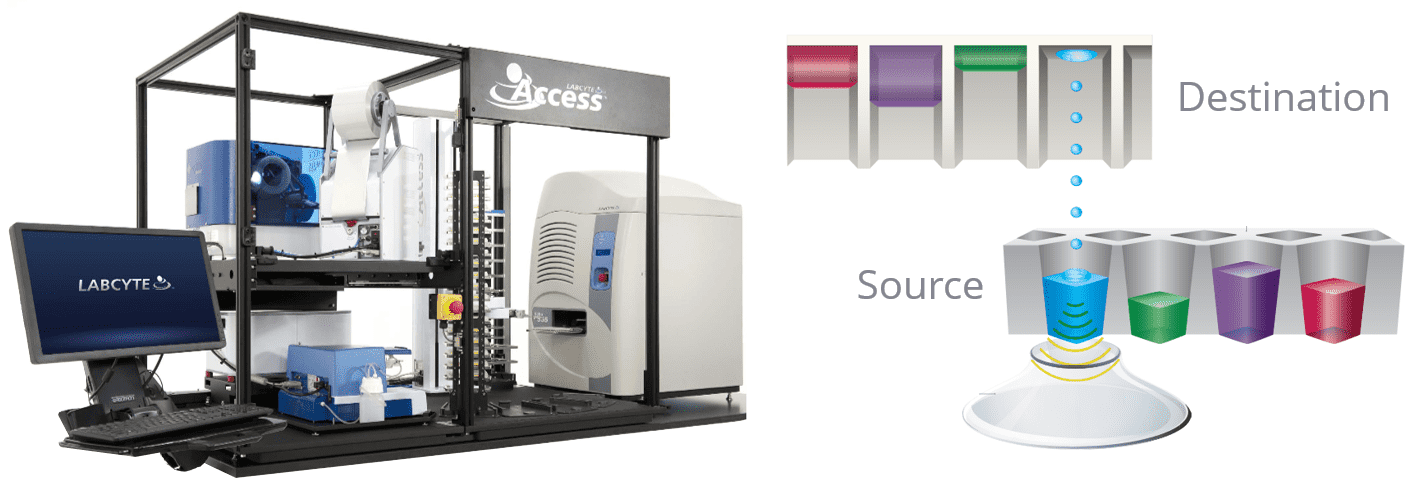
High-throughput screening
True biophysical, high-throughput screening using MicroScale Thermophoresis (MST), Dianthus, and nanoDSF. Don’t get only a yes-or-no answer for your fragments or compounds. Get their true steady-state affinity. MST and nanoDSF offer the absolute lowest sample consumption for biophysical screening on the market. Screenings of thousand of compounds can be performed with just a couple of hundred microliters of protein solution.
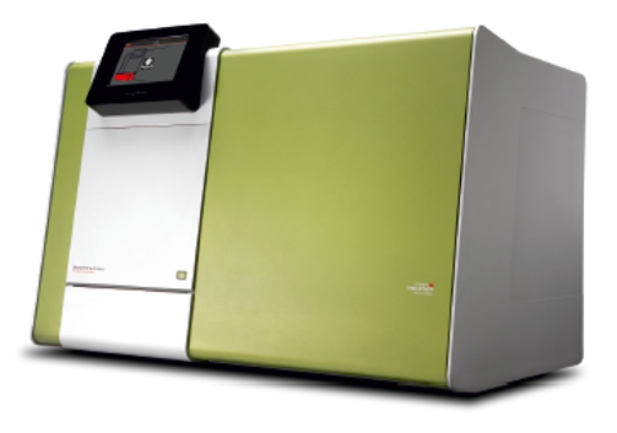
MST
Up to 200 full, 12-point dose-response curves in 10 hours with true steady-state affinity (KD) determination.
Up to 1200 single-dose analyses in 10 hours.
> Online quality-controls (target instability, precipitation, and adhesion effects).
> Classification of binders, non-binders, fluorescent-effects, target-aggregation-inducing compounds, etc.
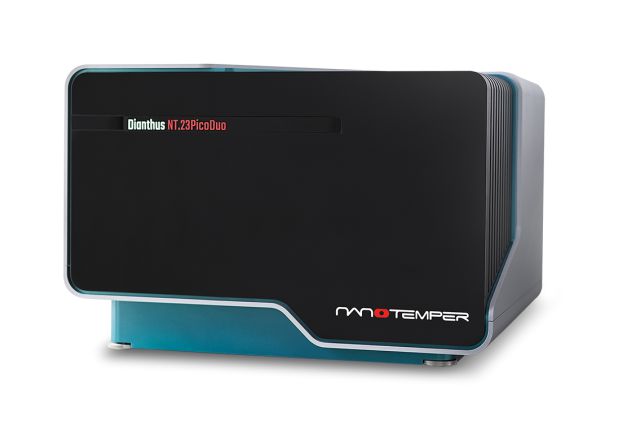
Dianthus
Up to 500 full, 12-point dose-response curves in 10 hours with true steady-state affinity (KD) determination.
Up to 3000 single-dose analyses in 10 hours.
> Online quality-controls (target instability, precipitation, and adhesion effects).
> Classification of binders, non-binders, fluorescent-effects, target-aggregation-inducing compounds, etc.

nanoDSF
Up to 48 target-ligand pairs in parallel with determination of ligand-induced thermal shift of protein denaturation.
Up to 480 ligand analyses in 10 hours.
> Online quality-controls (target unfolding, ligand fluorescence).
> Identification of target-aggregation-inducing ligands possible by light scattering.
Hit Validation + Hit Characterization
A number of biophysical paramters is of great intereset in the Hit Validation phase of a drug discovery projects. These include precise steady-state binding affinity to the screening target (KD), as well as the kinetic (kon, koff) and thermodynamic (ΔG, ΔH, ΔS) parameters of hit-target interactions. We cover all these questions with our portfolio of MST, Dianthus, nanoDSF, BLI, and ITC methods.
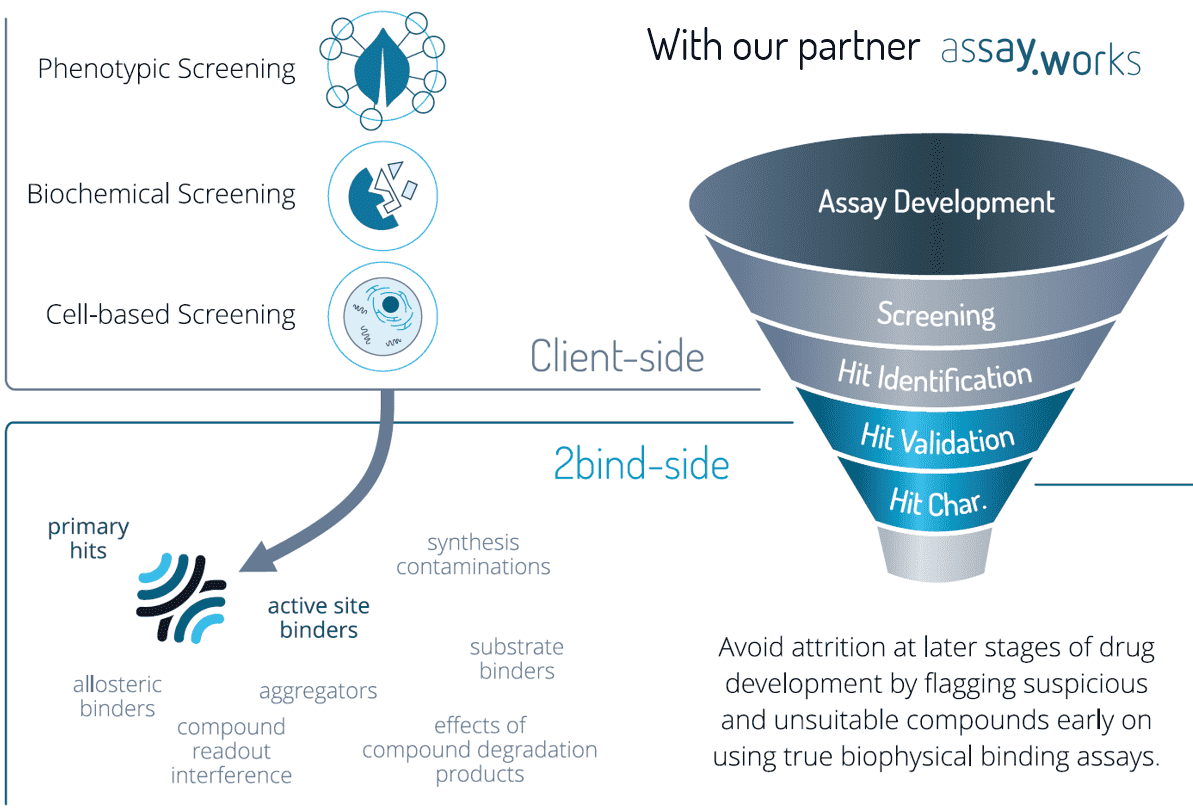
In hit-to-lead stages, a lower number of drug candidates are typically analyzed with respect to more advanced binding parameters, like stoichiometry, possible competition effects, or their mode-of-action. Moreover, off-target effects have to be carefully investigated, for example by analyzing hit-target interactions in various biological liquids like serum, celly lysate, blood plasma, urine, or the like. Benefit from our higly-variable timelines and project setups to choose the right assay at the right time of the hit-to-lead phase, just as you like.
